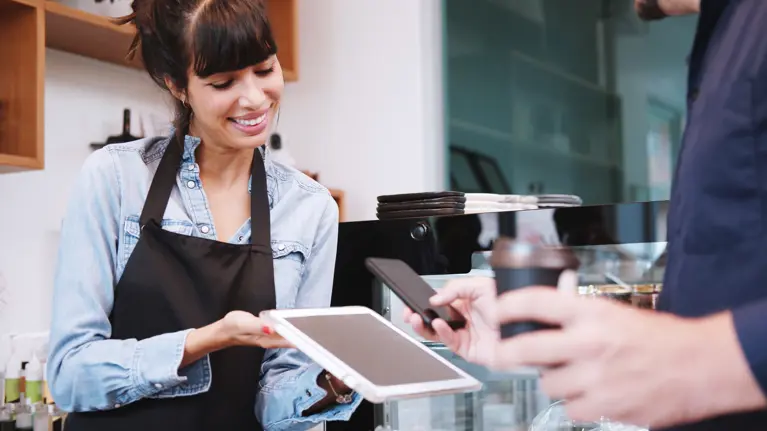
Five ways cards and phones can work together to make payments better
Industry hype is focused on digital wallets and alt-pays – but let us share with you how to maximize the combination of the mobile phone and payment card.
Here are five ways the mobile phone and payment card can work together for greater speed, convenience and security.
-
Biometric security
Biometric security features like user fingerprints and iris scans are highly effective against fraud because they are unique to the user – as well as being easy to implement and operate. While they have been available on mobile devices for a decade, they are now becoming a feature on payment cards – and mobile phones can help users to activate and manage their biometric cards. Our new white paper explains how this process works – and why managing physical cards via an app like Tietoevry’s My Cards is the future of payments.
-
In-store payments: phones as card terminals
In May 2023, Tietoevry Banking launched Tap on Phone, an innovative solution designed to make payment acceptance faster, easier and cheaper for merchants of all sizes. Using Tap on Phone, merchants can accept payments from any contactless card or mobile wallet directly from their standard Android mobile phone. Payment acceptance no longer needs traditional card payment terminals, just software downloaded from an app store – and a card to tap with.
-
Online authentication: fast and easy digital ID
The EU introduced Strong Customer Authentication (SCA) as part of its second Payment Services Directive (PSD2) to help fight fraud. Under SCA, all transactions over €50 must be authenticated using a secondary factor such as a passcode. While SCA is effective, it’s arguably introduced additional friction and slowed down transactions. Now Android phone users can tap their card on their phone to confirm their identity at online checkout. By providing convenient, fast authentications compliant with SCA, this collaboration between card and phone should boost to e-commerce growth.
-
Card and mobile wallet as one
Our new white paper shows consumers don’t always prefer digital wallets over cards. January 2023 research firm JD Power claimed more Americans preferred paying by card compared to mobile wallets. In a recent survey for Payments Europe, 78% of consumers said[1] they wanted to be able to choose how they paid – while 48% of merchants in the same survey said they still saw cards as their main source of non-cash revenue out to 2026.
-
Physical + virtual = phygital cards?
Virtual cards may be the payments phenomenon of the 2020s. In 2021, the virtual card market was valued at $1.9 billion, and Juniper Research say[2] this could grow to around $6.8 billion by 2026. Virtual cards can be linked to a digital wallet – or a physical payment card. They are a popular alternative to corporate expense cards because they are sustainable, convenient and cheap to issue – though as with digital wallets, many users value the ability to link a virtual card to a physical card for convenience and choice at point of sale or online.
Download our new white paper now for more on why and how mobile phones and cards are working together to deliver more services and greater security, speed and convenience in payments.
[1] Payments Europe, November 2021, “The Evolution of the European Payments Market”: https://www.paymentseurope.eu/wp-content/uploads/2021/11/The-Evolution-of-the-European-Payments-Market_Payments-Europe_Spread.pdf
[2] Juniper Research, undated 2021, “The Virtual Cards Market”: https://www.juniperresearch.com/infographics/virtual-cards-statistics




